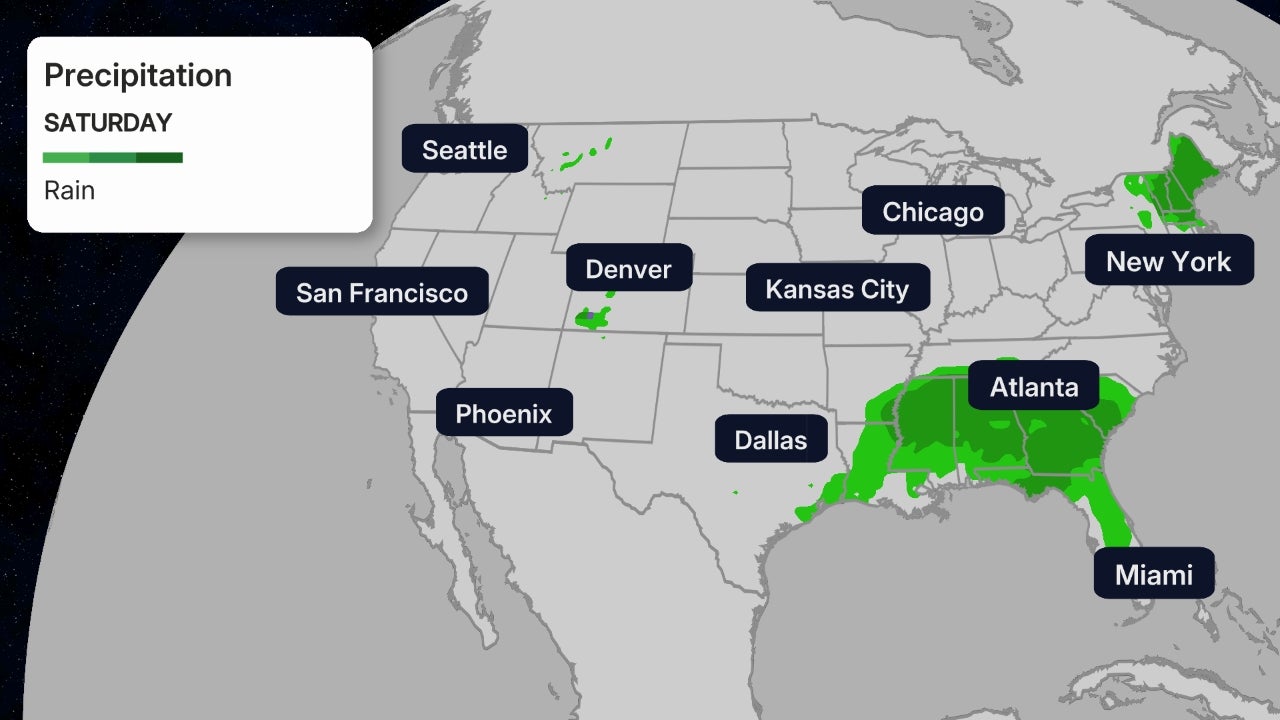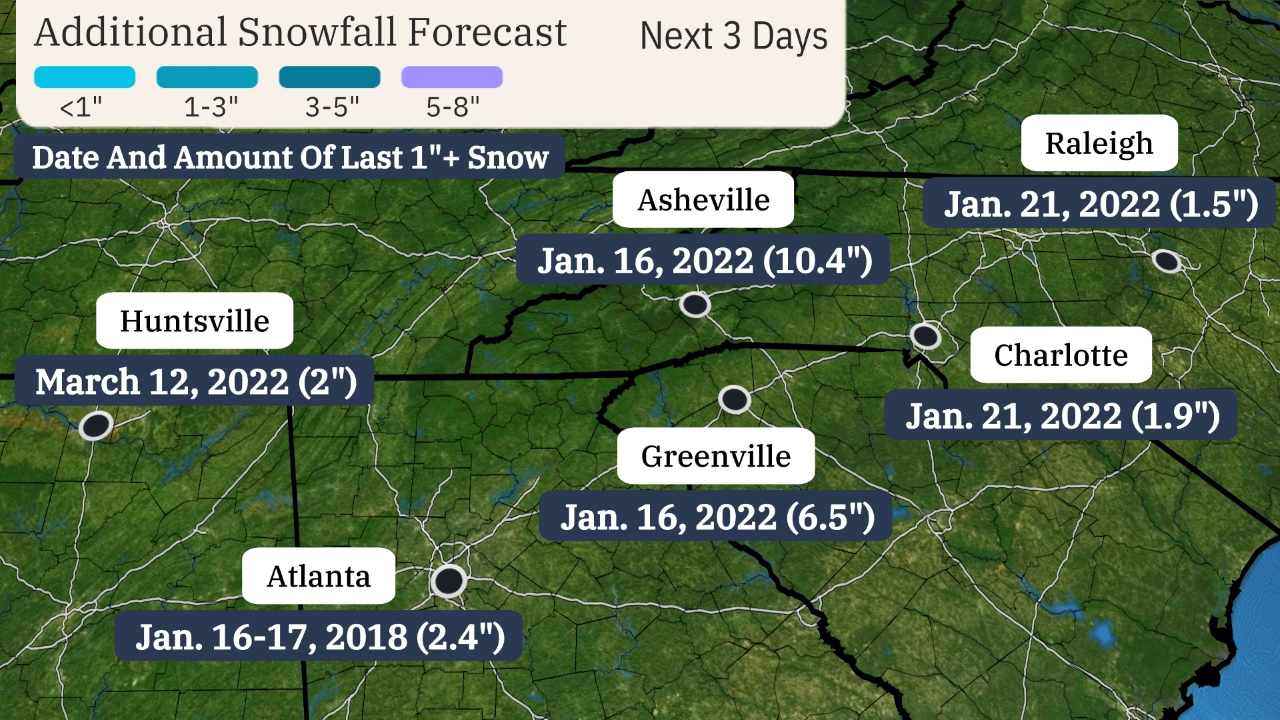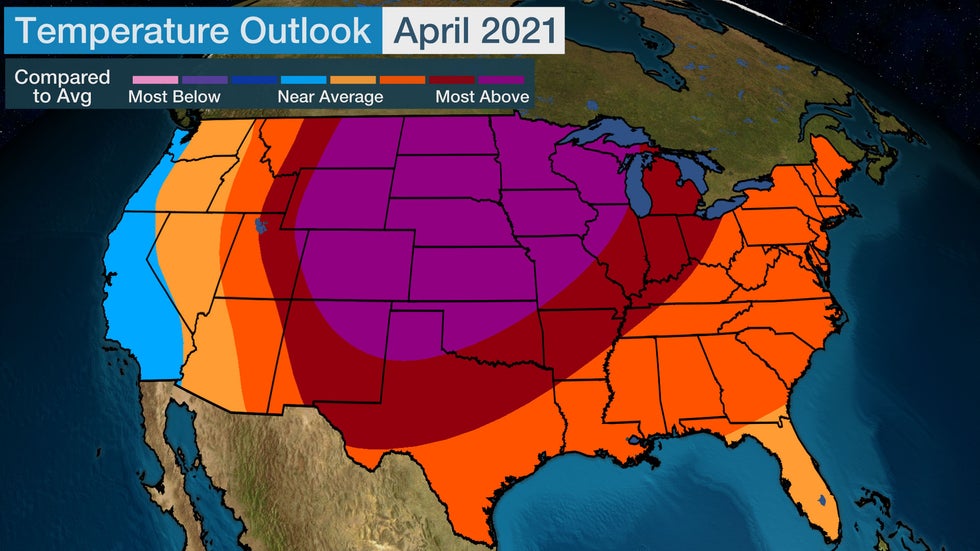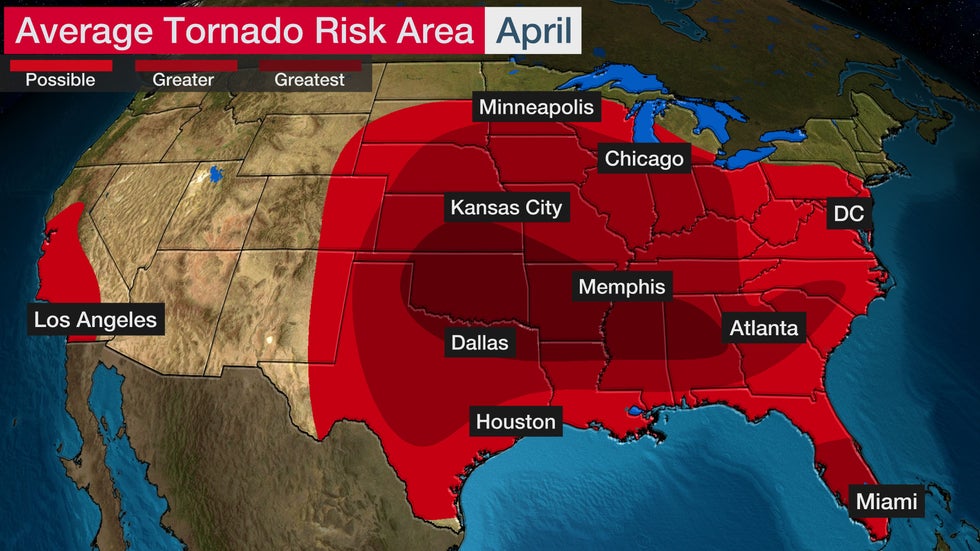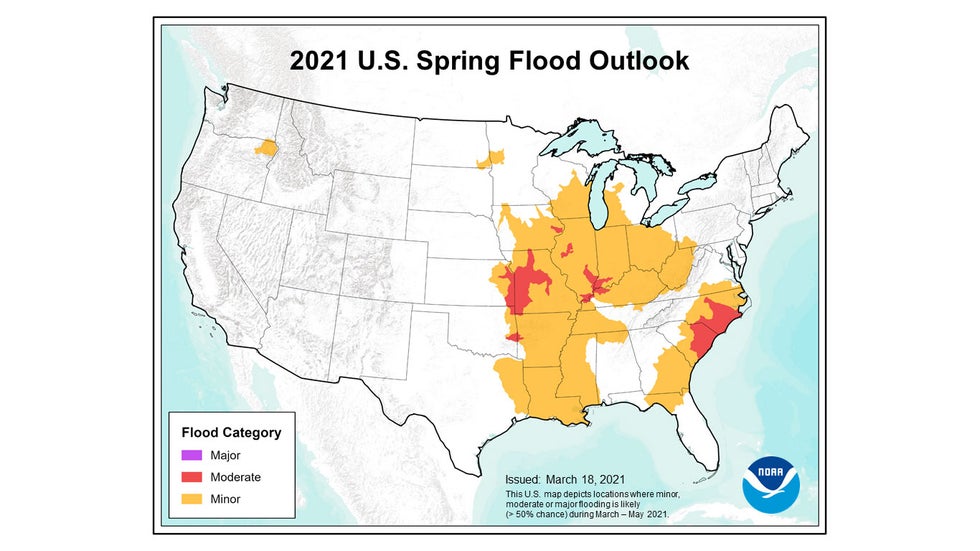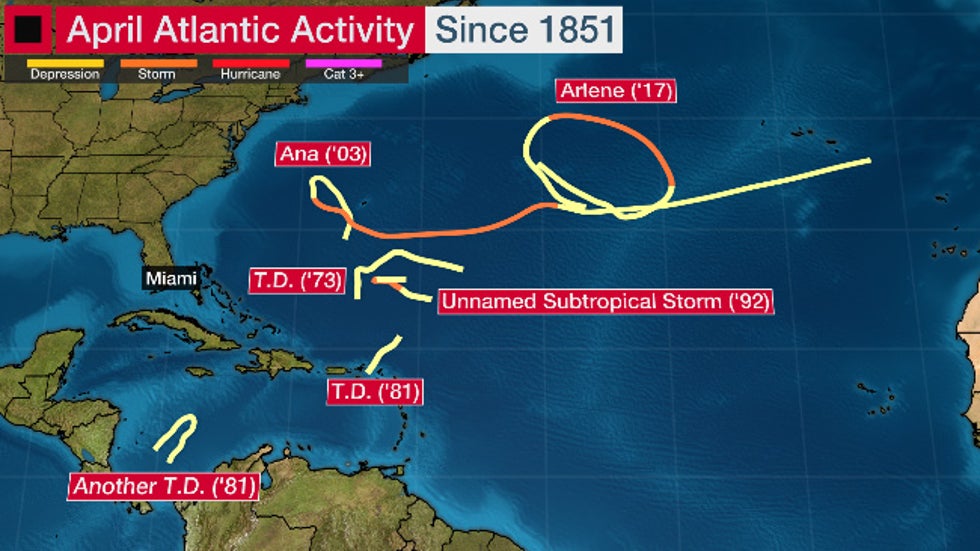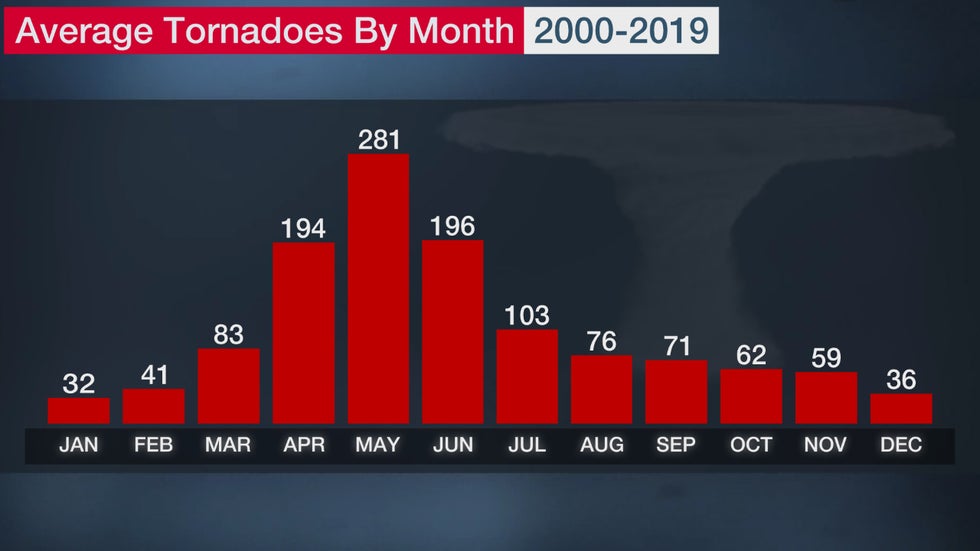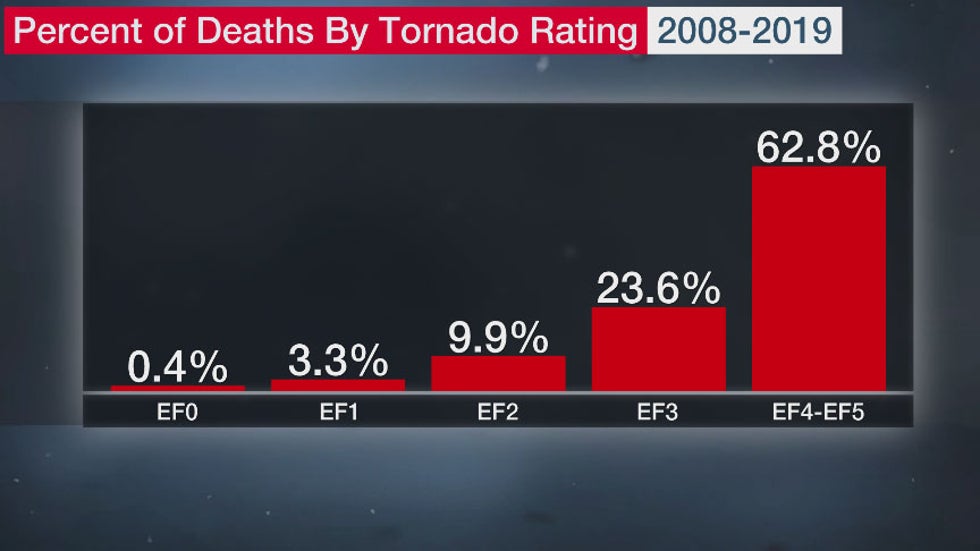By AccuWeather staff writer
Published Mar. 20, 2021 3:09 PM EDT
As Americans eagerly await for spring temperatures to loosen winter's icy grip, new data suggests that many major U.S. cities could see warmer-than-normal temperatures -- a trend that has been consistently documented for the past 50 years.
An analysis of 243 cities across the U.S. conducted by Climate Central, a nonprofit news organization that focuses on climate science, revealed that nearly half of the cities have recorded higher spring temperatures of 2 degrees Fahrenheit or more over the past half-century. Of the 243 cities, 120 of them, or 49%, have seen this trend -- which can ultimately lead to an earlier wildfire season, decimated crops and can impact food supply.
In addition, 96% of the cities included in the analysis reported an increase in the amount of above-normal days for spring temperatures since 1970. Meanwhile, 81% of the cities have reported at least five more days above normal yearly.
“How much that increase in warmth has occurred is variable from region to region,” Theresa Crimmins, director at USA National Phenology Network, told AccuWeather. “In some regions of the country, we’re seeing a much stronger trend toward more warmth earlier in the year.”
According to Crimmins, the southwestern U.S. is in part where some of the most dramatic trends of early warmth in recent years has occurred.

Cherry blossoms, like the ones shown above alongside the Arlington Memorial Bridge in Washington, D.C., are one of many plants that respond biologically to rising spring temperatures across the U.S.(Photo/GettyImages/uschools)
“In the Southeastern part of the country it's a messier story really,” Crimmins said. She explained that a portion of the country is actually experiencing what she referred to as a “warming hole,” meaning the pattern of warming seen across much of the U.S. is not as prevalent in the region.
The northern Plains is the only portion of the U.S. to actually be trending cooler instead of warmer in the spring, according to AccuWeather Senior Meteorologist Bob Smerbeck.
The Dallas-Fort Worth area has reportedly had 15.7 more spring days above normal temperature in 2020 than in 1970, and the average temperature for spring has increased by 2.9 degrees.
Houston, Texas, which is over 200 miles south of Dallas, has warmed nearly a full degree more than the Dallas-Fort Worth area, increasing in average temperature by 3.8 degrees from 1970 to 2020. The city of Houston had 23.6 more above-normal spring days in 2020 than it did 50 years prior.
Smerbeck suggests that for some cities, the proximity to cool water may play a role in their ability to maintain cooler temperatures longer.
While it does not apply to Houston due to warmer waters in the Gulf of Mexico in springtime, cities along the coast in the eastern U.S. and the West Coast can be cited as prime examples of how cool waters can play a role in local spring temperatures.

Take Philadelphia and New York City, for example.
Philadelphia's average spring weather has warmed by 2.7 degrees since 1970, and the city reported 11.9 more days above normal during the spring of 2020 than in 1970. Despite being less than 100 miles apart, New York City's warming trend has been significantly less impressive than the one in Philadelphia, the former only reporting 2.2 more days above normal during the spring of 2020 compared to 50 years prior, and increasing in average spring temperature by one degree.
"The difference between Philadelphia and New York City could be that New York City is closer to the chillier ocean at this time of year and it can keep it cooler in the spring," Smerbeck said. "Another factor is how fast cities are expanding with asphalt and concrete causing urban heat island. Houston is an example of this."
According to Crimmins, some research suggests that urban areas experience the heat more-so than rural areas with less development.
Cities along the Pacific Ocean, such as Los Angeles, have also reported much more minimal growth in warmth, which Smerbeck said could be due to the cooler waters in the Pacific as well.
While many Americans are surely looking forward to soaking up the sun for as long as possible, an extended warm season has natural impacts.

FILE - In this June 27, 2020, file photo, a lifeguard keeps watch over a packed beach in Huntington Beach, Calif. The Los Angeles County Department of Public Health is ordering L.A. County beaches closed from July 3 through July 6 at 5:00 a.m. to prevent dangerous crowding that results in the spread of deadly COVID-19. (AP Photo/Marcio Jose Sanchez, File)
Crimmins explained that when the weather warms up earlier in the year, it creates a biological response within the environment that starts earlier in the year as well and inevitably results in a shorter winter overall for the region.
While this could initially sound more pleasant to people who love warmer weather, it can result in a longer allergy season for people who suffer from pollen allergies. The early start to pollen season can account for more trips to the emergency room as a result of uncontrolled asthma.
Smerbeck said the early warmth can also potentially turn dangerous, as it can trigger an easier start to wildfire season in the Southwest and Great Basin as the regions get hotter and drier. He said an earlier start to fire season is forecast for those regions this year as well.

FILE - In this Sept. 9, 2020, file photo, the San Francisco skyline in the distance behind Crissy Field is barely visible due to smoke from wildfires burning across California. Researchers say smoke from wildfires accounted for up to half of all small particle air pollution in parts of the western U.S. in recent years (AP Photo/Eric Risberg, File)
Early warmth followed by freezing temperatures can also devastate crops.
Apples and cherries, for example, produce flower buds before they produce leaf buds. If the flower buds develop and then are hit by frost, the fruit is no longer able to develop, whereas if the leaf buds are hit by frost the trees can usually bounce back by producing another round of leaves.
“When we have frost hitting flower buds, that can be really devastating,” Crimmins said. “In some recent years, we’ve had huge impacts to fruit crops as a consequence of early warmth followed by freezing temperatures."
In 2017, the entire southeastern United States and a good portion of the eastern U.S. experienced record setting early warmth into the spring season. The peach crop in Georgia was particularly affected by the record warmth, as the flower buds came out early and were harmed by the following weather conditions.
"I think the crop was decimated by something like 80 or 90%," Crimmins said.
Smerbeck has also experienced firsthand how early warmth followed by cold temperatures can impact plant growth and said he has had hyacinths blossom ahead of schedule and ultimately get wiped out by a freeze three out of the last four springs.
“We also see consequences where species that depend on each other to be active at the same time are not responding to the increasing warmth to the same degree,” Crimmins said.
This is creating what she described as “biological mismatches,” where for example a plant that requires a specific pollinator is not responding to the warmth in the same way the pollinator does, putting the plant species at a disadvantage.

FILE - This Feb. 17, 2021 file photo shows an empty irrigation canal at a tree farm in Corrales, N.M., with the Sandia Mountains in the background, as much of the West is mired in drought, with New Mexico, Arizona, Nevada and Utah being among the hardest hit. The National Oceanic and Atmospheric Administration’s official spring outlook Thursday, March 18, 2021, sees an expanding drought with a drier than normal April, May and June for a large swath of the country from Louisiana to Oregon. including some areas hardest hit by the most severe drought. And nearly all of the continental United States is looking at warmer than normal spring, except for tiny parts of the Pacific Northwest and southeast Alaska, which makes drought worse. (AP Photo/Susan Montoya Bryan)
Aside from the economic impacts and food availability concerns associated with destroyed crops, Crimmins said there are also more social impacts to the shift in temperatures for the spring -- particularly with seasonal festivals such as the annual cherry blossom festivals in Washington, D.C. The nation's capital has reported 5.7 more days above normal temperatures in spring 2020 compared to spring 1970.
"Tulip Time festivals or lilac festivals or even cherry blossom festivals can be impacted when the dates are set far in advance and the biological event is very responsive to the weather conditions in a given year," Crimmins said. "We've seen that in a couple recent years."
As for the upcoming season, AccuWeather forecasters have spelled out what you can expect for temperature trends along with other weather factors this spring.
RELATED:
Keep checking back on AccuWeather.com and stay tuned to the AccuWeather Network on DirecTV, Frontier, Spectrum, FuboTV, Philo, and Verizon Fios.

